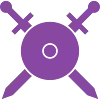If you see this message, it means that your browser failed to load this file.
You should try the following : check your connection, disable ad-blocker, clear your browser cache, try in private mode, try from another browser/computer/connection.
Play Dungeon Twister and 1045 other games online.
No download necessary - play directly from your web browser.
With your friends and thousands of players from the whole world.
Free.
Latest Update
Dear players, a new arena season has started and some options changed for Dungeon Twister:
| Previous season | New season |
|---|
| Game Setup | simultaneous | normal |
| Cycles Setup | 4 Cycles | unlimited |
See more

Challenge
the best players in the world
Become the next champion of
Dungeon Twister
Game information
Designer
Artist
Thierry Masson, Wayne Reynolds
Publisher
Year
Developed by
Number of games played
Number of players
Game duration
Complexity
Strategy
Luck
Interaction
Available since
Release
Dungeon Twister On the web
العربية
беларуская мова
български език
Brezhoneg
Català
čeština
Dansk
Deutsch
Ελληνικά
English
Español
Eesti keel
فارسی
Suomi
Français
Galego
עברית
Hrvatski
Magyar
Italiano
Bahasa Indonesia
日本語
한국어
Lietuvių
Latviešu
Bahasa Malaysia
Nederlands
Norsk
Polski
Português
Română
Русский язык
Slovenčina
Slovenščina
Српски
Svenska
ไทย
Türkçe
Українська мова
Tiếng Việt
中文 (漢)
中文 (汉)



